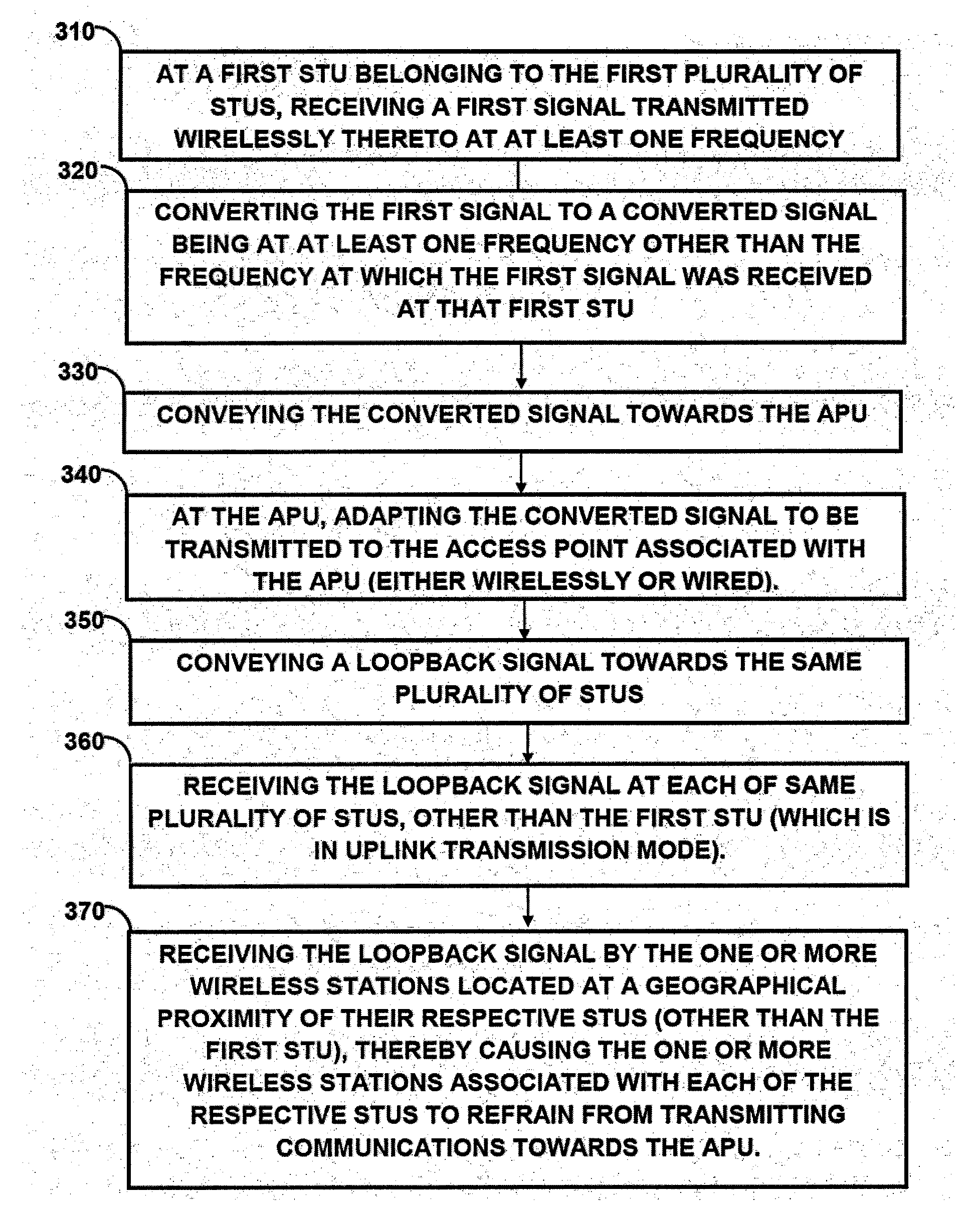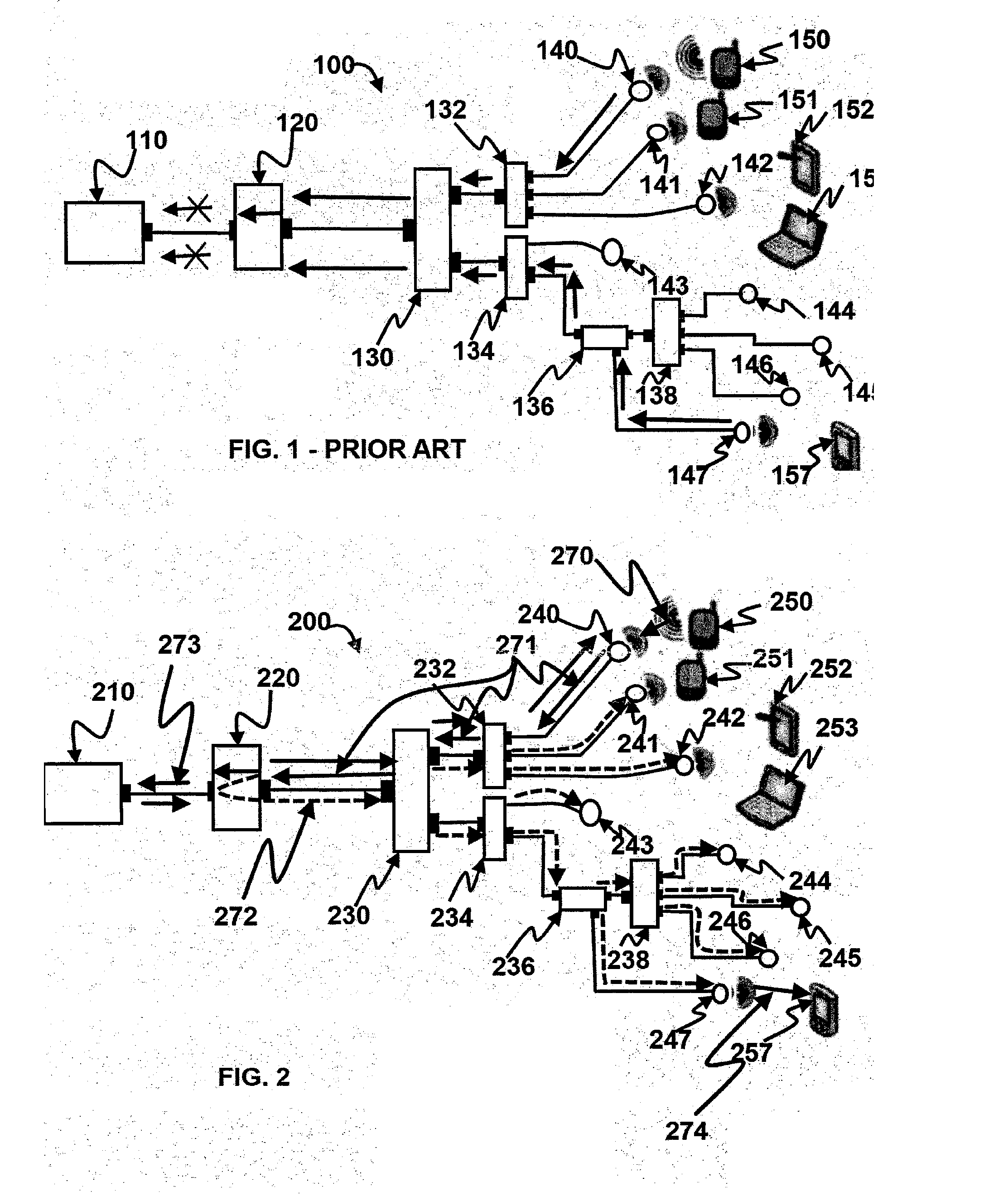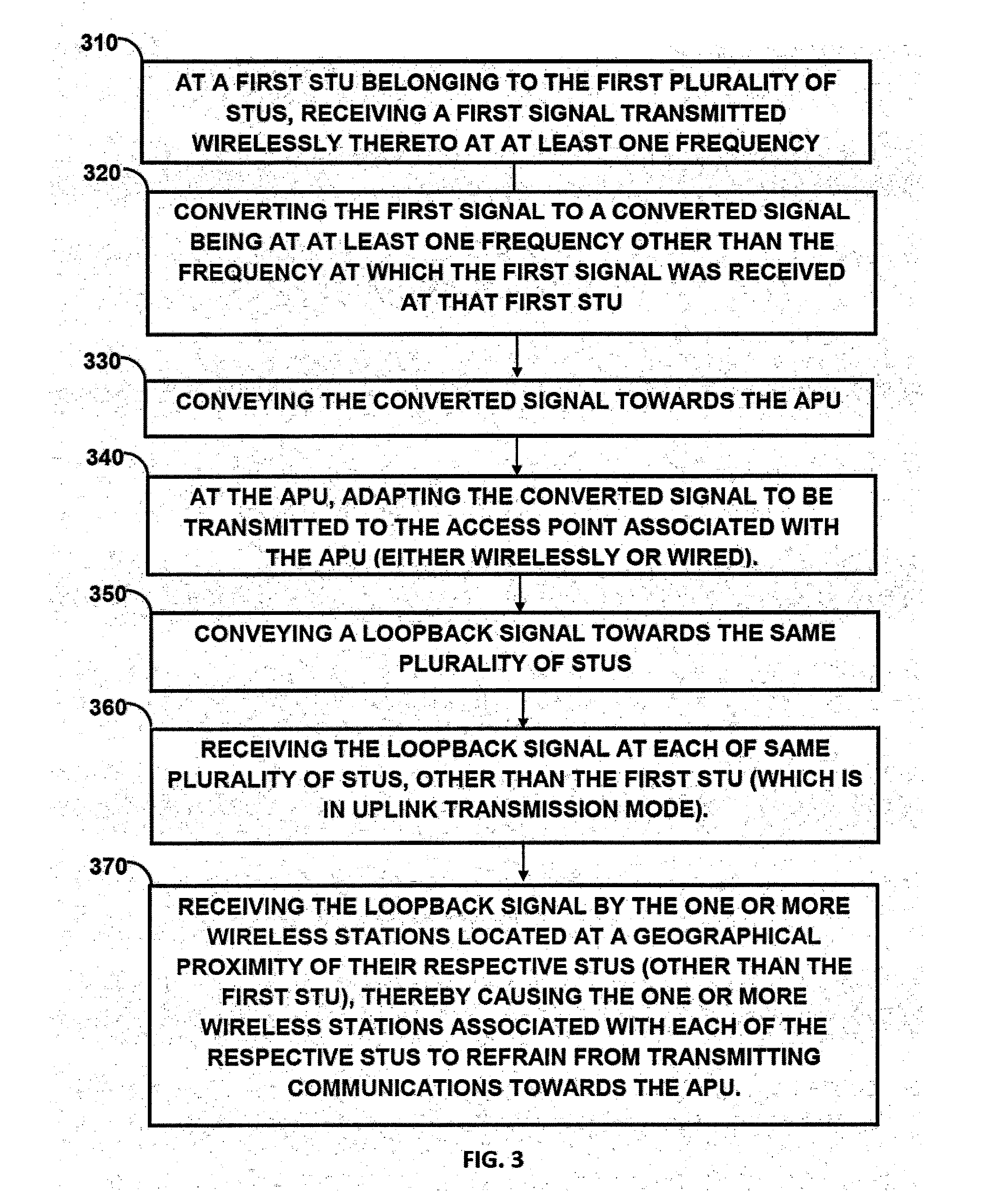Method and system for managing a wireless network comprising a distributed antenna system (DAS)
a distributed antenna and wireless network technology, applied in the field of wireless local area networks, can solve the problems of hidden nodes, increased problems, and increased problems, along with the increase in the number of wireless stations
- Summary
- Abstract
- Description
- Claims
- Application Information
AI Technical Summary
Benefits of technology
Problems solved by technology
Method used
Image
Examples
Embodiment Construction
[0055]In this disclosure, the verb “comprise” is intended to have an open-ended meaning so that when a first element is stated to comprise a second element, the first element may also include one or more other elements that are not necessarily identified or described herein, or recited in the claims.
[0056]In the following description, for the purposes of explanation, numerous specific details are set forth in order to provide a thorough understanding of the present invention. It should be apparent, however, that the present invention may be practiced without these specific details.
[0057]The present invention may be implemented in WLAN systems in an active DAS environment to overcome interference created indoor between unsynchronized endpoints using the CSMA / CA contention protocol, mainly the various IEEE 802.11 standards, such as IEEE 802.11 a / b / g / n / ac / ad.
[0058]A detailed description of a DAS network is described in U.S. Pat. No. 7,403,742, which is hereby incorporated by reference....
PUM
 Login to View More
Login to View More Abstract
Description
Claims
Application Information
 Login to View More
Login to View More - R&D
- Intellectual Property
- Life Sciences
- Materials
- Tech Scout
- Unparalleled Data Quality
- Higher Quality Content
- 60% Fewer Hallucinations
Browse by: Latest US Patents, China's latest patents, Technical Efficacy Thesaurus, Application Domain, Technology Topic, Popular Technical Reports.
© 2025 PatSnap. All rights reserved.Legal|Privacy policy|Modern Slavery Act Transparency Statement|Sitemap|About US| Contact US: help@patsnap.com



